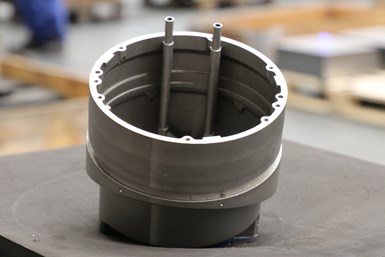Experimental Fusion Reactor To Use Rosswag AM Cooling Heads
Rosswag Engineering has produced 3D-printed cooling heads for a plasma-exposed environment in the Wendelstein 7-X fusion reactor.

The conditions within the Wendelstein 7-X fusion reactor required Rosswag to produce cooling heads with high durability for heat, magnetic, radiation and corrosion. Photo Credit: Rosswag Engineering
Rosswag Engineering is producing plasma-exposed, 3D-printed cooling heads for the Wendelstein 7-X fusion reactor at the Max Planck Institute for Plasma Physics in Greifswald, Germany.
The Wendelstein 7-X is an experimental reactor built to both investigate the physical and technical fundamentals of stellarators for nuclear fusion power plants and demonstrate their principle suitability as an alternative to the Tokamak principle.
The reactor uses Rosswag’s water-cooled heads for thermal monitoring of the diverters located in the plasma vessel and protection of the mounted mirrors inside. Due to the heads’ plasma-exposed location and complex mounting position, the components must meet corrosion resistance standards; tight tolerances; and high requirements for magnetic, heat and radiation exposure.
Rosswag Engineering's holistic process chain enabled the firm to carry out all of the production steps in-house, from 3D printing to CNC machining and material analysis, ensuring complete documentation of all data and interfaces.
Related Content
-
3D Printing Molds With Metal Paste: The Mantle Process Explained (Video)
Metal paste is the starting point for a process using 3D printing, CNC shaping and sintering to deliver precise H13 or P20 steel tooling for plastics injection molding. Peter Zelinski talks through the steps of the process in this video filmed with Mantle equipment.
-
How Norsk Titanium Is Scaling Up AM Production — and Employment — in New York State
New opportunities for part production via the company’s forging-like additive process are coming from the aerospace industry as well as a different sector, the semiconductor industry.
-
VulcanForms Is Forging a New Model for Large-Scale Production (and It's More Than 3D Printing)
The MIT spinout leverages proprietary high-power laser powder bed fusion alongside machining in the context of digitized, cost-effective and “maniacally focused” production.








